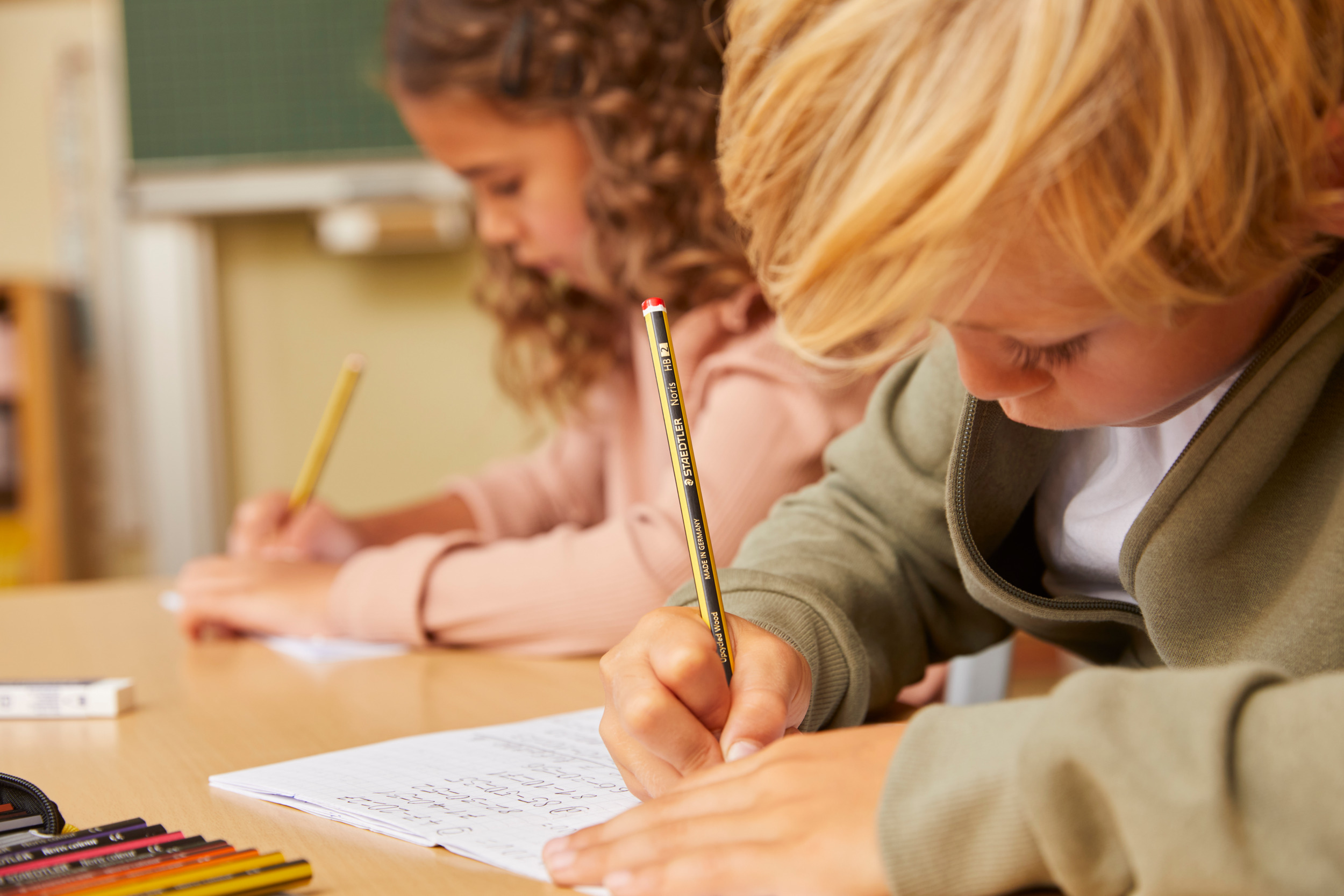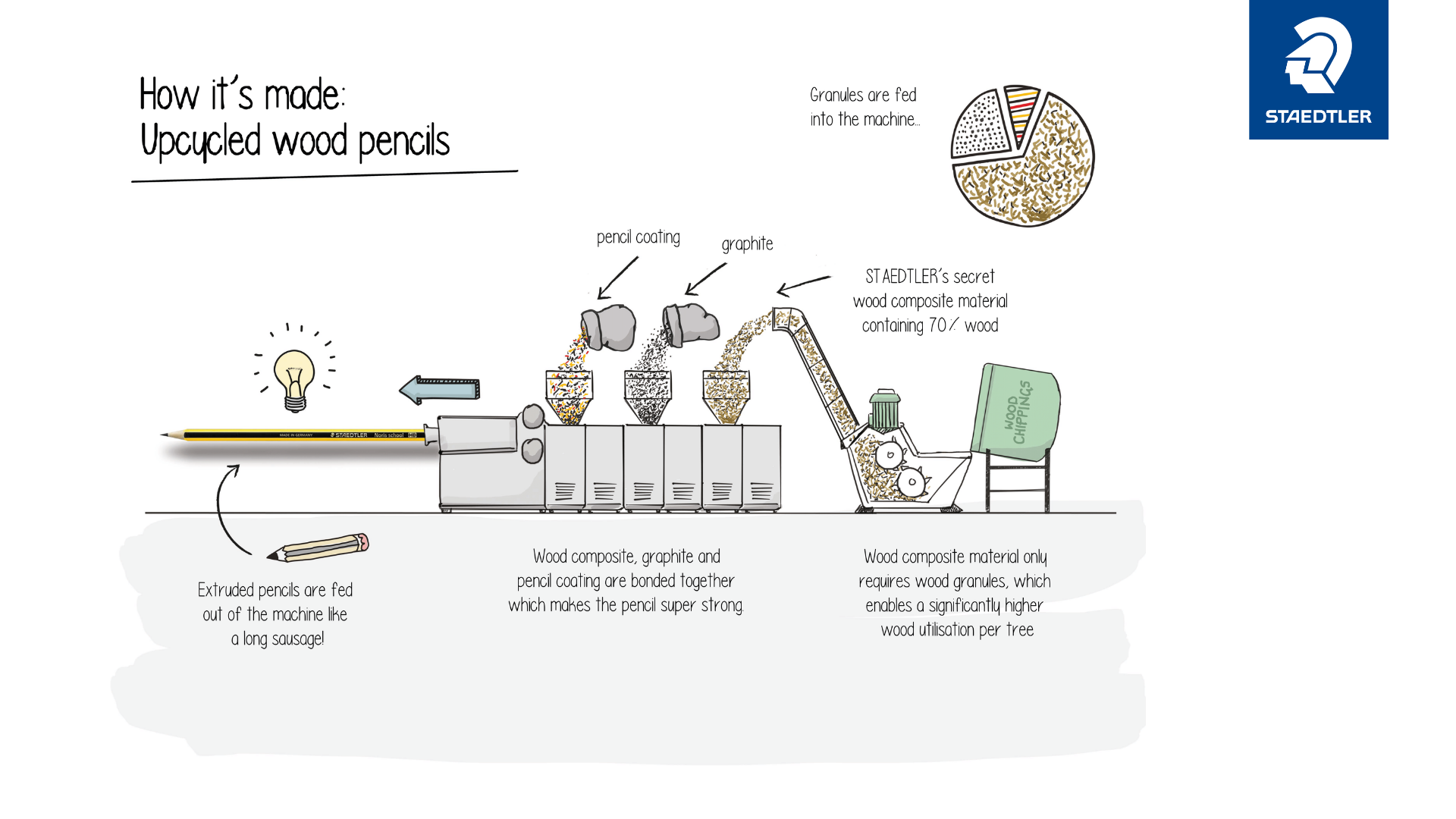What does upcycling mean?
Upcycling is a great way for your classroom to be more sustainable. Whether you upcycle items yourself or introduce upcycled supplies to your classroom, it is a step in the right direction towards a greener future. But what does upcycling mean?
Discover what upcycling is and how it works in this blog. Explore both the benefits of upcycling and some activities you can do with your class too. You can also delve into STAEDTLER’s Upcycled Wood pencils and why you should consider them when looking for upcycled supplies for your classroom.
How does upcycling work?
So, what does upcycling mean and how does it work? Upcycling basically transforms residual or waste materials into something new. Upcycled items are materials that have been given a new lease of life. The finished product often becomes more practical and valuable than it used to be.
Upcycling is often better than recycling as when you recycle the item loses its value. Upcycling gives you an upgrade, therefore, giving the item a new purpose. Recycling loses value due to the process of breaking certain items down, such as plastic.
Benefits of using upcycled items
There are many benefits of using upcycled items or upcycling materials in your lessons. The main benefit is that it helps the environment. Stocking up on upcycled items or upcycling materials makes sure that it doesn’t go into landfill. When waste is improperly disposed of, it can cause pollution in soil and water. It can even lead to air pollution too.
Another benefit to the environment through upcycling is it reduces the use of natural resources. When you use upcycled materials or upcycle something, it means that no new raw materials are needed in the production process.
Other benefits are:
- Supporting local industries
- Reduces manufacturing costs
Upcycled activities for your class
There are various activities you can do with your class that explores upcycling and giving something old a new life. A huge material you can upcycle is toilet roll tubes. Task children to create hanging animals out of the tubes or why not create a racetrack for toy cars?
Other materials to upcycle can be newspaper, tins, cartons and plastic bags. You could make plastic bag parachutes with your class, create kites to fly outdoors, or create tin wind chimes to hang around the school… the possibilities are endless.

STAEDTLER Noris Upcycled Wood pencils
STAEDTLER have created a new production process for pencils made from Upcycled Wood. This process is used to create Noris pencils, a perfect eco-friendly piece of stationery for your classroom. These pencils are even more sustainable as they’re made from reclaimed wood chips, giving discarded wood leftovers an upgraded life.
They are easy for children to use and hold and are perfect for all different activities during your lessons. Use them for art so that any mistakes can be rubbed out and corrected or use them to work out sums too.
The Upcycled Wood process
STAEDTLER uses reclaimed wood chips, being chips that would have previously been discarded from the factory floor, to create their Upcycled Wood pencils. This is used in their manufacturing process which is created in a machine. Due to only requiring the use of wood granules it enables a significant higher wood utilisation per tree. The granules are fed into a machine and turned into a composite made of 70% wood. This wood composite is then bonded with graphite and pencil coating to make the pencil strong. Pencils are then fed out of the end of the machine.

Create an upcycled classroom to be even more sustainable and ensure to stock up on key upcycled supplies. Have a go at some activities with your pupils to show them the importance of upcycling whilst having fun.
Discover more ways that children can help save the planet through our previous blog. Encourage eco-friendly activities to drive your pupils to make small changes and help our environment.